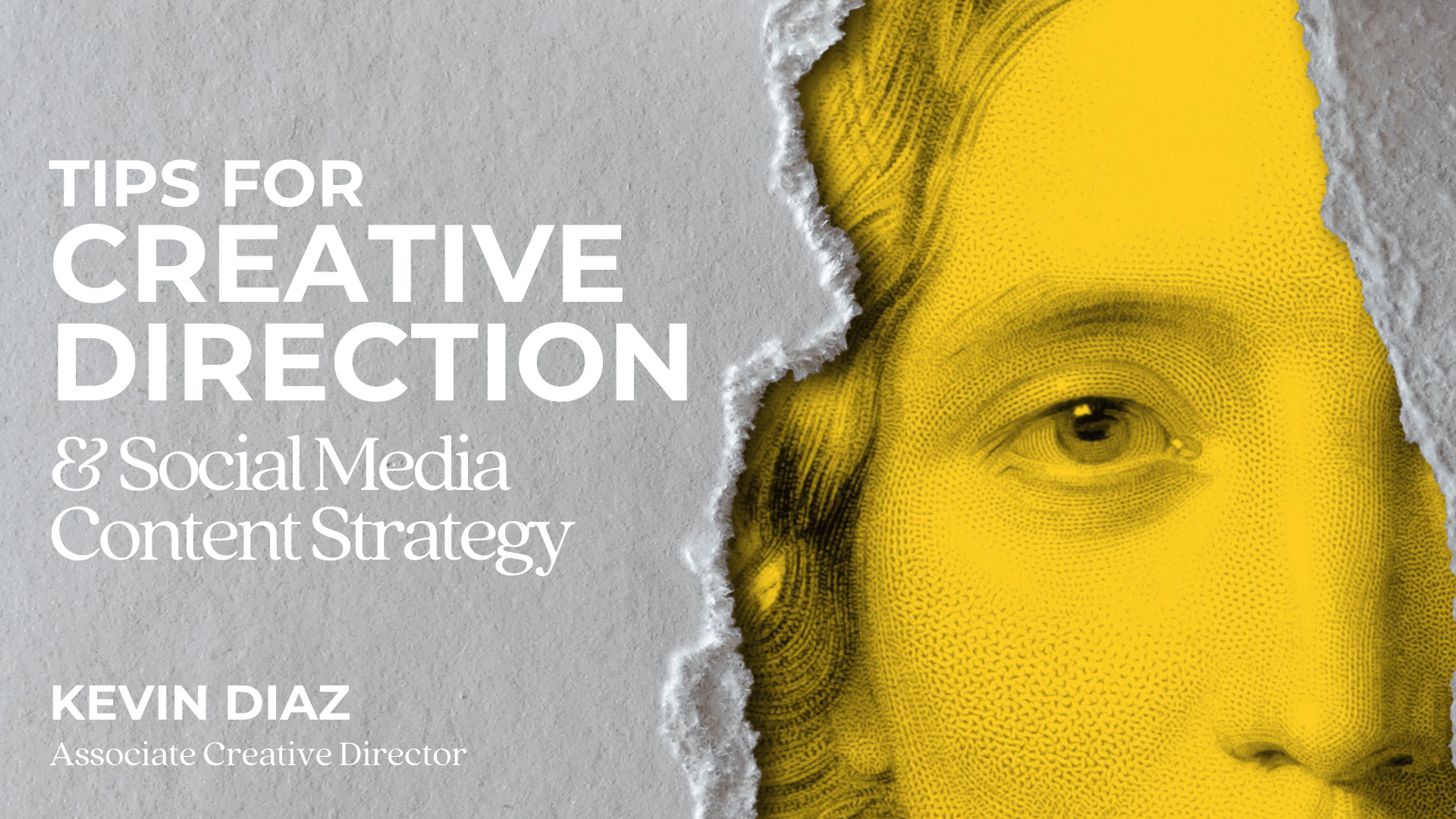
Crafting a successful social media content strategy is a multifaceted endeavor that requires careful planning, execution, and continuous optimization. At the heart of this strategy lies the concept of creative direction, which serves as a guiding principle for the visual and narrative elements of your social media content.
Effective creative direction ensures that your social media presence is cohesive, visually appealing, and aligned with your brand’s identity. It helps you cut through the noise of the digital landscape and captivate your target audience, ultimately driving engagement and achieving your marketing objectives.
In this article, we’ll explore the essential role of creative direction in crafting a successful social media content strategy. We’ll delve into the tools and resources available to help you master this crucial aspect of your digital marketing efforts, as well as the evolving landscape of creative direction in social media marketing. Finally, we’ll discuss strategies for measuring the success of your creative direction and provide a conclusion that ties it all together.
Mastering creative direction in your social media content strategy requires a diverse toolkit of resources and tools. Here are some key elements to consider:
Establishing a strong visual identity is essential for creating a cohesive and recognizable presence on social media. Develop comprehensive visual branding guidelines that outline the use of your logo, color palette, typography, imagery, and other visual elements. These guidelines will ensure consistency across all your social media platforms and content.
Leverage a variety of content creation tools to bring your creative vision to life. This may include design software like Adobe Creative Cloud, Canva, or Figma for creating visually stunning graphics, videos, and animations. Additionally, consider using social media-specific tools like Hootsuite, Buffer, or Sprout Social to streamline your content planning, scheduling, and publishing processes.
Stay up-to-date with the latest trends and best practices in social media creative direction by regularly consuming industry blogs, social media influencer content, and competitor analysis. Tools like Trendspottr, BuzzSumo, and Feedly can help you identify emerging trends and gain insights into what resonates with your target audience.
Effective creative direction often involves a collaborative process, where you can gather feedback and input from your team, stakeholders, and even your audience. Utilize tools like Google Docs, Trello, or Asana to facilitate seamless collaboration and ensure that your creative direction aligns with your overall business objectives.
Continuously monitor the performance of your social media content to identify what’s working and what can be improved. Leverage analytics tools like Google Analytics, Facebook Insights, or Twitter Analytics to track key metrics such as engagement, reach, and conversion rates. Use these insights to refine your creative direction and optimize your content strategy over time.
By leveraging these tools and resources, you can develop a robust and strategic approach to creative direction, ensuring that your social media content captivates your audience and drives meaningful results for your business.

The role of creative direction in social media marketing has undergone a significant evolution in recent years. As the digital landscape continues to shift and consumer preferences evolve, the importance of creative direction has become increasingly paramount.
Each social media platform has its own unique characteristics, user behaviors, and content preferences. Effective creative direction requires you to adapt your approach to align with the specific nuances of each platform. For example, the visual style and storytelling techniques that resonate on Instagram may differ from those that perform well on LinkedIn or TikTok.
In the age of social media, consumers crave authenticity and genuine connections with brands. Creative direction that showcases your brand’s personality, values, and unique perspective can help you stand out in a crowded digital landscape. Leveraging user-generated content, behind-the-scenes glimpses, and a more casual, conversational tone can contribute to a more authentic and relatable brand presence.
The rapid evolution of social media platforms has given rise to new content formats. Mastering these emerging formats requires a deep understanding of their unique characteristics and the ability to adapt your visual and narrative approach accordingly. Staying ahead of the curve in this regard can help you captivate your audience and maintain a competitive edge.
As social media platforms become more sophisticated in their data-driven capabilities, creative direction must also evolve to incorporate personalization and targeted messaging. By leveraging audience insights and segmentation, you can craft content that resonates more deeply with specific user groups, ultimately driving higher engagement and conversions.
The integration of emerging technologies, such as augmented reality (AR), virtual reality (VR), and artificial intelligence (AI), is transforming the creative landscape of social media marketing. This context requires a willingness to experiment, explore new possibilities, and push the boundaries of traditional content creation.

Measuring the success of your social media content strategy is essential for understanding the impact of your efforts and making informed decisions about future content development. Here are some key metrics and methods to consider:
Track engagement metrics such as likes, comments, shares, and click-through rates to gauge how your audience is responding to your content. Look for patterns and trends that suggest which types of creative direction and content formats are resonating the most with your followers.
Monitor the reach and impressions of your social media content to understand how widely your creative direction is being exposed. This can help you identify content that is particularly effective at capturing attention and driving visibility for your brand.
Analyze the conversion rates and goal completion metrics associated with your social media content to understand how your creative direction is influencing desired actions, such as website visits, lead generation, or sales. This can help you refine your approach and optimize for better business outcomes.
Utilize tools and techniques for sentiment analysis to gauge the overall sentiment and emotional response that your creative direction is evoking from your audience. This can provide valuable insights into the effectiveness of your brand’s tone, messaging, and visual identity.
Compare your social media content performance and creative direction against industry benchmarks and your competitors. This can help you identify areas for improvement and ensure that your approach remains innovative and compelling within your market.
Having a social media presence and publishing engaging and relevant content is essential today, regardless of what type of business you own or what industry you’re in. Every organization needs a good content marketing strategy. It’s how you get discovered on the internet.
But what is a good social media content strategy? Put simply, it’s one that involves planning, creating, and consistently implementing content on social media platforms.
You shouldn’t post just for the sake of it. Think about what you’re trying to achieve. Do you want to promote a special offer? Educate readers? Or is the goal to entertain your target audience so they keep coming back for more? Each social media post should be carefully planned. And it should have a purpose.
But how to plan social media content? We address that (and more) below. Here’s a step-by-step guide on creating a solid social media marketing plan. Think of this as your personal social media content strategy template.
The first step in creating a content marketing strategy on social media is to set clear and measurable goals.
Think about what you want to achieve through your social media presence. Are you aiming to build brand awareness, drive traffic to your website, boost community engagement, or drive sales?
Each of these objectives requires a different approach and type of content. For example, if your goal is brand awareness, focus on content that highlights your brand’s personality, values, and story. Create engaging visuals, behind-the-scenes videos, and user-generated content to grab people’s attention.
If driving traffic to your website is your primary objective, create content with compelling calls to action (CTAs) and links to your site. Blog posts, infographics, and promotional offers that entice your audience to visit your website can be particularly useful.
For boosting community engagement, interactive content like polls, Q&A sessions, and contests can help build community and encourage conversations around your brand.
Finally, if your goal is to drive sales, promotional content, product demonstrations, and customer testimonials can be powerful tools. By clearly defining your goals, you can tailor your content strategy to meet those specific objectives.

It goes without saying that knowing your target audience is critical for crafting a social media content strategy that resonates. Identifying key metrics like age, gender, income, and interests will help you form detailed buyer personas. With this information, you can create content that appeals directly to their needs and interests.
Use tools like Google Analytics to gain insights into your target demo’s behaviors and preferences. Also analyze metrics on social media sites—like X/Twitter Analytics and Instagram Insights—to understand your audience’s engagement patterns and content preferences.
Knowing your audience and what they care about most is key to building an effective social media marketing plan.
Choosing the right social media platforms is essential for reaching your target audience effectively. If your target demo is mostly Gen Z, for example, you’ll want to be on platforms like TikTok and Snapchat, which cater to younger audiences who prefer short, engaging content and real-time interactions.
If your target demographic is older, you’ll want to focus on platforms like Facebook, which has a more diverse age range but tends to be popular with older users. LinkedIn and X/Twitter are ideal for reaching B2B audiences, while Instagram appeals to a wide range of demographics but is especially popular with younger adults and teens.
By following your audience on the platforms they use most, you’re more likely to maximize your impact.
Once you’ve set your goals and identified your audience and platforms, it’s time to map out a content plan and schedule. This will help you stay organized and on track with consistent posting.
For each post, you’ll need to decide which type of content best aligns with your goals. For example, if you’re trying to boost community engagement, try using entertaining and interactive content, like quizzes, polls, and challenges. If your objective is to establish authority in your industry, focus on educational content like how-to guides, webinars, and infographics.
Your content plan should include a variety of content formats such as videos, images, blog posts, and stories to keep your audience engaged. Use a content calendar to plan your posts in advance. This will help you maintain a steady flow of content and avoid last-minute rushes.
Make sure your content aligns with relevant events, holidays, and trends to make it timely and relatable. A well-thought-out content plan will help you build a loyal audience.
Assessing the results of your social media efforts is crucial to understand what’s working and what’s not. Don’t lose sight of your original goal. Were you trying to increase your follower count by 20% or boost sales for a specific product by 10%? Did you achieve your goal?
Use the analytics tools provided by social media platforms to track key performance metric like engagement rates, reach, impressions, clicks, and conversions.
Look for patterns and trends in the data to identify what works best. For example, if you notice videos receive higher engagement than images, you might want to start incorporating more video content into your plan. If certain topics or formats consistently perform well, you can create more content around those themes.
Once you’ve identified what’s working and what isn’t, it’s time to tweak your approach. For instance, if your engagement rates are lower than expected, consider experimenting with different types of content, posting times, or CTAs. Use A/B testing to compare different versions of your posts and see which ones perform better. This iterative process will help you optimize your strategy over time.
Examples of refining your strategy might include increasing the frequency of posts that receive high engagement or adjusting your content mix based on what your audience prefers. You may even need to shift your focus to platforms that yield better results.
Keep an open mind and be flexible. Try experimenting with different strategies if you’re not getting the results you want.
Managing a social media strategy can be overwhelming, especially if you’re trying to handle everything yourself. Sometimes you just need a helping hand.
A social media management agency can help you track metrics, create content that resonates with your audience, and manage your advertising campaigns, so you can focus on running your business.
A professional social media company brings in-depth knowledge of the latest trends, tools, and best practices, to help you to succeed.

Having an active presence on social network platforms is one of the best ways to build your brand. Here are a few reasons you need a social media content strategy.
Creating a social media content strategy makes you more efficient. Instead of wasting time each day trying to come up with something to post, you’ll have a well-thought-out schedule that outlines what to post and when.
This not only saves you time but also reduces stress, allowing you to focus on critical aspects of your business. By planning your content in advance and following through, you’ll build trust with your audience by maintaining a steady flow of posts.
With a solid content strategy, you’re more likely to create content that engages your target audience. Knowing what your audience likes, shares, and comments on, you can tailor your posts to encourage interaction.
Better engagement leads to stronger relationships with your followers, increased brand loyalty, and ultimately, higher conversion rates.
Whether your goal is to increase brand awareness, drive traffic to your website, or boost sales, a strategic approach helps you create content that supports these objectives. By understanding your target audience and crafting content that resonates with them, you can effectively drive the desired actions and achieve a higher return on investment. Social media can be a powerful tool for growing your business.
By planning your content in advance, you can allocate your budget, time, and team efforts more efficiently. This includes scheduling posts during peak times for maximum reach, repurposing content across different platforms, and coordinating marketing campaigns.
A strategic approach allows you to make the most of your resources, ensuring that you are not overspending or overworking your team. Managing your resources wisely also means you can take advantage of content creation opportunities, such as seasonal trends and industry events, to keep your content fresh and relevant.
By leveraging the right tools, resources, and best practices, you can craft a cohesive, visually appealing, and engaging social media presence that captivates your target audience and drives meaningful results for your business.
As the role of creative direction continues to evolve, it’s essential to stay attuned to emerging trends, platform-specific nuances, and the changing preferences of your audience. By embracing authenticity, adapting to new content formats, and integrating emerging technologies, you can ensure that your social media content remains relevant, impactful, and aligned with your overall marketing objectives.
To take your social media content strategy to the next level, consider working with a team of experienced professionals who can help you master the art of creative direction. Contact us today to learn more about our comprehensive social media services and how we can help you achieve your business goals.
Written By: Kevin Diaz, Associate Creative Director